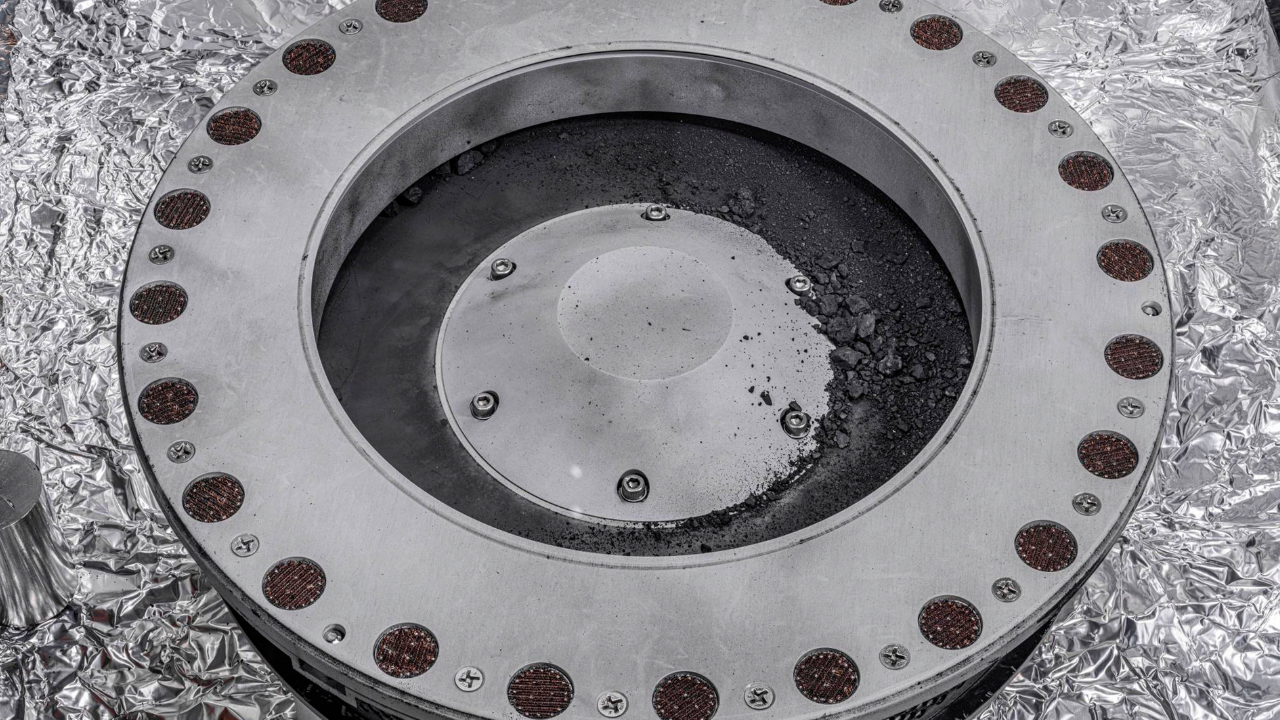NEW DELHI: Nasa on Wednesday unveiled its first asteroid samples delivered last month by a spacecraft and said that the 4.5-billion-year-old asteroid Bennu contained abundant water and carbon.
“The first analysis shows samples that contain abundant water in the form of hydrated clay minerals,” Bill Nelson said in a press conference as he provided a first peek for the public at what scientists found inside a tightly sealed canister that was returned to Earth last month carrying the largest soil sample ever scooped up from the surface of an asteroid.
“This is the biggest carbon rich asteroid sample ever returned to Earth,” he said, with the carbon contained in the form of both minerals and organic molecules.
The landing of the return capsule capped a six-year joint mission of the US space agency and the University of Arizona. It was only the third asteroid sample, and by far the biggest, ever returned to Earth for analysis, following two similar missions by Japan’s space agency ending in 2010 and 2020.
Like other asteroids, Bennu is a relic of the early solar system. Because its present-day chemistry and mineralogy are virtually unchanged since forming some 4.5 billion years ago, it holds clues to the origins and development of rocky planets such as Earth, and perhaps even the evolution of life. The capsule and its contents were initially examined in a “clean room” at the Utah Test and Training range near the landing site.
The capsule was then flown to the Johnson center, where its inner canister was opened in order for samples to be parceled into smaller specimens promised to some 200 scientists in 60 laboratories around the world.
OSIRIS-REx launched in 2016 and reached Bennu in 2018, then spent nearly two years orbiting the asteroid before venturing close enough to snatch a sample of the loose surface material with its robotic arm on Oct. 20, 2020.
Nasa is due to launch a separate mission on Thursday to a more distant asteroid called Psyche, a metal-rich body believed to be the remnant core of a protoplanet and the largest known metallic object in the solar system.
“The first analysis shows samples that contain abundant water in the form of hydrated clay minerals,” Bill Nelson said in a press conference as he provided a first peek for the public at what scientists found inside a tightly sealed canister that was returned to Earth last month carrying the largest soil sample ever scooped up from the surface of an asteroid.
“This is the biggest carbon rich asteroid sample ever returned to Earth,” he said, with the carbon contained in the form of both minerals and organic molecules.
The landing of the return capsule capped a six-year joint mission of the US space agency and the University of Arizona. It was only the third asteroid sample, and by far the biggest, ever returned to Earth for analysis, following two similar missions by Japan’s space agency ending in 2010 and 2020.
Like other asteroids, Bennu is a relic of the early solar system. Because its present-day chemistry and mineralogy are virtually unchanged since forming some 4.5 billion years ago, it holds clues to the origins and development of rocky planets such as Earth, and perhaps even the evolution of life. The capsule and its contents were initially examined in a “clean room” at the Utah Test and Training range near the landing site.
The capsule was then flown to the Johnson center, where its inner canister was opened in order for samples to be parceled into smaller specimens promised to some 200 scientists in 60 laboratories around the world.
OSIRIS-REx launched in 2016 and reached Bennu in 2018, then spent nearly two years orbiting the asteroid before venturing close enough to snatch a sample of the loose surface material with its robotic arm on Oct. 20, 2020.
Nasa is due to launch a separate mission on Thursday to a more distant asteroid called Psyche, a metal-rich body believed to be the remnant core of a protoplanet and the largest known metallic object in the solar system.
Denial of responsibility! Swift Telecast is an automatic aggregator of the all world’s media. In each content, the hyperlink to the primary source is specified. All trademarks belong to their rightful owners, all materials to their authors. If you are the owner of the content and do not want us to publish your materials, please contact us by email – swifttelecast.com. The content will be deleted within 24 hours.


